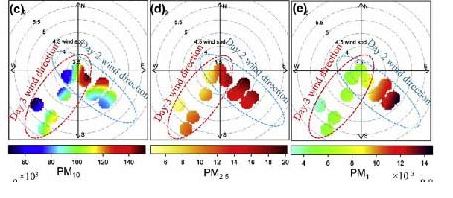Today we review research into the dispersion of fine particles, including Aluminum(Al), silicate(Si) Zinc (Zn) and Magnesium (Mg), from a building demolition in London, UK, using a dispersion model that took into account windspeed and direction, decay over time and distance from the site. Demolition of buildings is expected to increase significantly, as a result of a 60% greater urban population over the next two decades, in addition to newer urban design forms and technologies.
The exposure to the particles noted above are linked to lung and kidney (renal) diseases, greater mortality and cardiovascular and Alzheimer diseases. Results indicate that concentrations of particulate matter (PM1, PM2.5 and PM 10) downwind of the demolition site is 4 to 11 times (respectively) greater than background levels, Males near or in the site inhale more dust than females and thus have a higher health risk. One could expect similar impacts from the digging of roads and construction of tunnels and ditches for Light and Heavy Rail Transit in large cities, currently in progress and planned for cities such as Toronto and Ottawa.

Key Quotes:
“Construction and demolition waste contribute up to about 33% of the total waste from all the streams; about half of which is demolition waste”
“This increased rate of building demolition could be linked to growing population of the urban areas and the need for improvements to meet new urban design guidelines and adopt building technologies ….the global urban population is expected to increase by about 60% in 2035 from the 2013 levels”
“the RDD [respiratory deposited doses] of coarse and fine particles were found to be 58- and 5-times in the excavator vehicle cabin, respectively, which happens to be the highest exposure among all the assessed categories.”
“Exposure to Si have been linked with variety of adverse effects such as lung ..and renal … diseases; both of which have been found to result in increased rate of mortality... In addition, inhaling higher doses of Al have been associated with the cardiovascular … and Alzheimer’s .. diseases, besides leading to increased morbidity, particularly in older people.”
“Since Si, Al and other elements such as Mg and Zn ..are integral part of inhaled particles, there is clearly an increased health risks at demolition sites.”
“The mass concentrations of average PM10, PM2.5 and PM1 were found to be about 11-, 3- and 4-times above the local background levels during fixed-site measurements at the downwind of the demolition site. The coarse particles (PM2.5e10) contributed majority(89%) of the total PMCs.”
“The male subjects inhale more doses of particles than female subjects, because of their higher body tidal volume and breathing frequency and that the rate of deposited particles could considerably increase during heavy exercises by workers for the same emission source.”
No comments:
Post a Comment